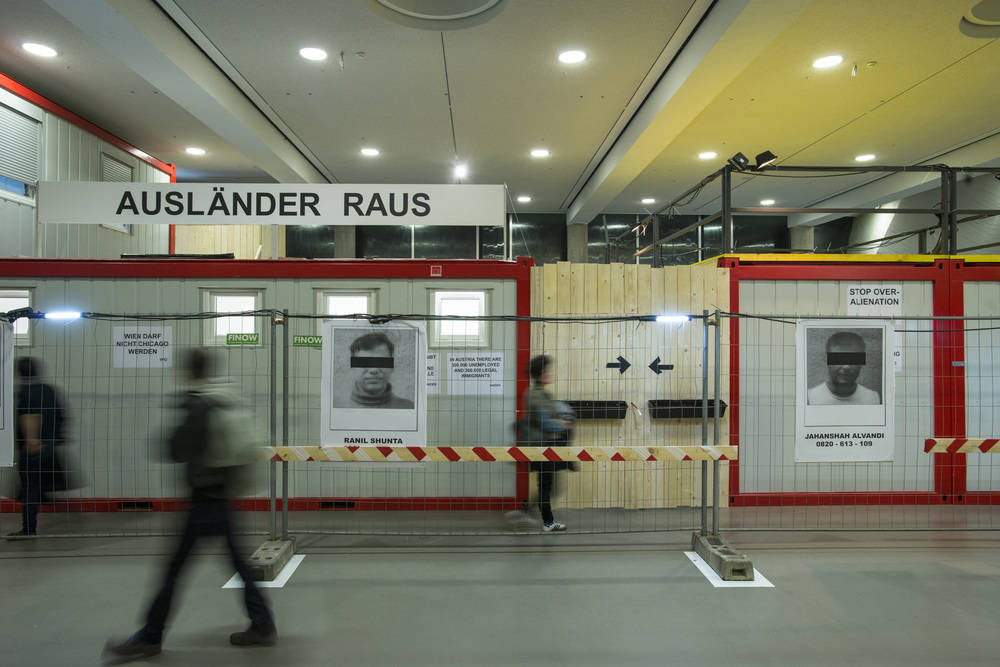In a June 2000 interview in Der Standard given by journalist Claus Philipp,
Christoph Schlingensief stated that for his project Ausländer raus–Bitte liebt Österreich [Foreigner out—Please love Austria], “My original idea was actually to film a scenario in advance covering several days, no, covering seven weeks. The idea was to project the film showing the conflicts of the inmates, the poisoned atmosphere, the breakdowns outside and inside the containers, which could have been installed this way in any museum. Thus it would become a kind of installation. Also about the fact that I too find myself in a bunker. …” Now, more than one decade later and three years after the artist’s untimely death,
Nina Wetzel who conceived and designed the container
camp in Vienna in 2000 and dramaturge
Matthias Lilienthal, Schlingensief’s long-time collaborator, enact the project at HKW in the framework proposed in the quote above. The container
camp is still present, though no longer in close proximity to the bourgeois dictate of the Vienna State Opera. The then omnipresent format of the Big Brother reality TV show, which broadcasted live 12 asylum seekers as they competed for sympathy votes from Austrian citizens in order to assure their stay in Austria, a country stricken with xenophobic sentiment, is here displaced by a cacophony of original film and audio recordings. While pressing at that point in time, the imagery continues to unmask the world of politics and media through uncovering racism and social exclusion, disclosing the prevailing sense of disorientation and with it the reluctanceto take a stand, the manipulability of the public, and the culture of resentment in which nationalism and prejudice are rampant. At the same time the project shows immense mobilization of the public, showing that a way out of the troubled present is not only necessary, but also possible.
